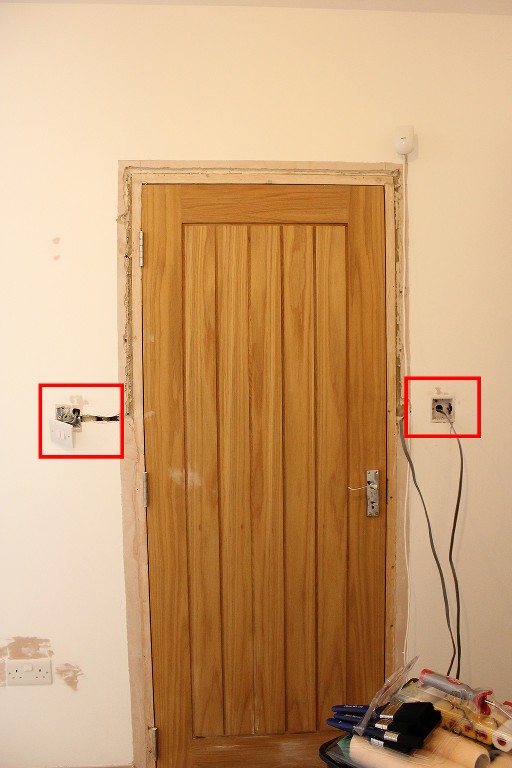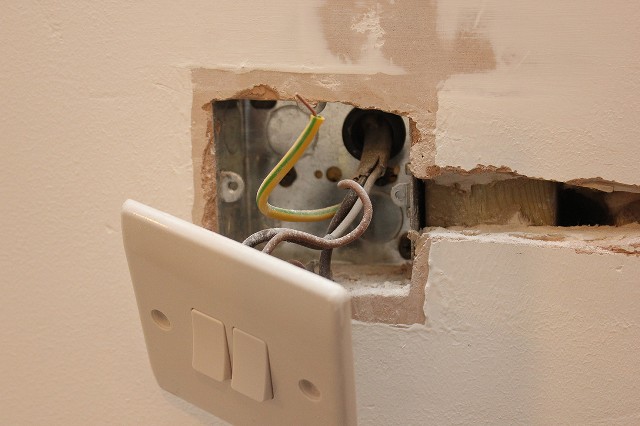You shouldn't need a blank plate if you use a maintenance free junction box. However, if the wiring is not in a prescribed 'safe zone' or at least 50 mm deep from each side of the wall, there could be issues.
I would have thought the wiring comes from above. If so, I would consider doing the joint above the ceiling. Is there access above? If not, you may have to cut a neat hole in the ceiling above the existing switch.
There the joint can be made, and a new cable run from here, fished across the ceiling towards the new switch position.
It would be very handy to see photographs of the existing wiring, as we are doing a lot of guessing.
You can't run cables round the door frame behind the architrave as it's not allowed. Cables have to be run in safe wiring zones - which usually mean running cables horizontally or vertically in line with an electrical accessory, or within 150 mm from a corner or ceiling.
I'm sure someone will send a drawing of the safe zones...
By running the cable round the door frame and covering it up, no one knows the cable is there. It's not in line with an electrical accessory, so no one would expect it to be there. So therefore it may get damaged, particularly by someone fitting door hinges or nailing on architrave...
You mention 3 core electrical cable. What's that? You need 1.0 or 1.5 mm2 two core and earth flat cable.
PICTURES please.
I would have thought the wiring comes from above. If so, I would consider doing the joint above the ceiling. Is there access above? If not, you may have to cut a neat hole in the ceiling above the existing switch.
There the joint can be made, and a new cable run from here, fished across the ceiling towards the new switch position.
It would be very handy to see photographs of the existing wiring, as we are doing a lot of guessing.
You can't run cables round the door frame behind the architrave as it's not allowed. Cables have to be run in safe wiring zones - which usually mean running cables horizontally or vertically in line with an electrical accessory, or within 150 mm from a corner or ceiling.
I'm sure someone will send a drawing of the safe zones...
By running the cable round the door frame and covering it up, no one knows the cable is there. It's not in line with an electrical accessory, so no one would expect it to be there. So therefore it may get damaged, particularly by someone fitting door hinges or nailing on architrave...
You mention 3 core electrical cable. What's that? You need 1.0 or 1.5 mm2 two core and earth flat cable.
PICTURES please.





